I'm trying to recreate this image using sklearn.datasets.load_iris and seaborn. I really like the idea of doing fig, ax = plt.subplots() and then using seaborn's ax=ax attribute. I can't figure out how to recreate this plot: 
I checked on stackoverflow and found this but it overlays them How To Plot Multiple Histograms On Same Plot With Seaborn
Here's my code and plot:
# Iris Dataset
from sklearn.datasets import load_iris
import matplotlib.pyplot as plt
import seaborn as sns; sns.set()
%matplotlib inline
DF_data = pd.DataFrame(load_iris().data,
columns = load_iris().feature_names,
index = ["iris_%d" % i for i in range(load_iris().data.shape[0])])
Se_targets = pd.Series(load_iris().target,
index = ["iris_%d" % i for i in range(load_iris().data.shape[0])],
name = "Targets")
#Visualizing Iris Data
D_targets = {0: 'Iris-Setosa',
1: 'Iris-Versicolor',
2: 'Iris-Virgnica'}
D_features = {0: 'sepal length [cm]',
1: 'sepal width [cm]',
2: 'petal length [cm]',
3: 'petal width [cm]'}
fig, ax = plt.subplots(nrows=2, ncols=2, figsize=(8, 6))
idx_feature = 0
#Plot on 2 x 2 ax object
for i in range(ax.shape[0]):
for j in range(0, ax.shape[1]):
for idx_target, label_target in list(D_targets.items()):
sns.distplot(DF_data.as_matrix()[Se_targets==idx_target, idx_feature],
label=D_features[idx_feature],
kde=False,
bins=10,
ax=ax[i][j])
idx_feature += 1
plt.legend(loc='upper right', fancybox=True, fontsize=8)
plt.tight_layout()
plt.show()
My plot is looking pretty bad:
UPDATE:
In response to @Cel answer, I've achieved this plot but I haven't been able to fix the labels and darken the lines around the plots.



